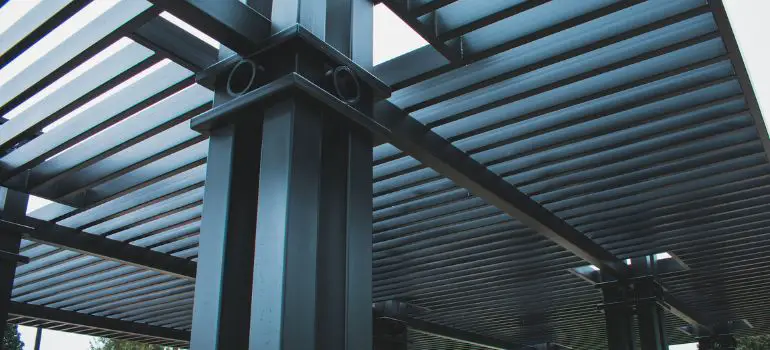Headers and beams are the unsung heroes of construction, providing essential support and structural integrity to buildings. In the realm of construction, understanding the nuances between headers and beams is crucial for architects, builders, and anyone involved in the construction process. Let’s delve into the world of headers and beams, exploring their structural differences, functions, materials, design considerations, and much more.
Structural Differences Between Headers and Beams
Headers
Headers are horizontal elements that distribute the weight of the structure above an opening, such as doors or windows. They play a vital role in bearing loads and ensuring the stability of the overall construction. Typically made from materials like wood, steel, or engineered lumber, headers serve as critical components in framing.
Beams
Beams, on the other hand, are horizontal or sloping structural elements that support the load of the structure above them. They transfer this load to vertical elements, such as columns or walls. Beams come in various shapes and sizes, and their design depends on factors like the span they need to cover and the load they must carry.
Functions of Headers and Beams
Role of Headers
Headers primarily provide support and distribute the weight of the structure, preventing sagging or collapsing around openings. They are indispensable in creating stable door and window frames, ensuring the integrity of the building.
Role of Beams in Supporting Structures
Beams bear the weight of the structure, transmitting it to the vertical supports. Their primary function is to distribute the load evenly, preventing uneven settlement and ensuring the overall stability of the construction.
Materials Used in Headers and Beams
Common Materials for Headers
Headers can be crafted from a variety of materials, including wood, steel, and engineered lumber. The choice of material depends on factors such as load-bearing requirements, cost considerations, and design preferences.
Common Materials for Beams
Beams commonly use materials like steel, reinforced concrete, or laminated veneer lumber. The material selection for beams is critical, as it directly impacts the load-carrying capacity and overall structural performance.
Design Considerations for Headers and Beams

Factors Influencing Header Design
1. Load-Bearing Capacity
The primary consideration in header design is the load it will bear. Different construction projects demand headers with varying load-bearing capacities. Engineers carefully calculate the expected loads, ensuring the chosen header can support the weight without compromising structural integrity.
2. Span Length
The span length, or the distance the header must cover, greatly influences design decisions. Longer spans require headers with enhanced strength and stability. Designers often incorporate larger or reinforced headers for extended spans, guaranteeing optimal load distribution.
3. Material Selection
The choice of material significantly impacts header design. Wood, steel, and engineered lumber are common materials. The selection depends on factors like project specifications, budget constraints, and the aesthetic preferences of architects and builders.
4. Building Codes and Regulations
Compliance with building codes and regulations is non-negotiable in construction. Header designs must adhere to these standards to ensure the safety and longevity of the structure. Designers meticulously follow local codes, taking into account factors such as seismic considerations and wind loads.
Factors Influencing Beam Design
1. Load Distribution
Similar to headers, beams are subject to varying loads. The design process involves calculating the load distribution across the beam to prevent uneven stress that could compromise the overall stability of the structure.
2. Cross-Sectional Shape
Beams come in different cross-sectional shapes, each with its unique load-bearing characteristics. Designers carefully select the appropriate shape based on the specific requirements of the construction project, considering factors such as the expected load and span length.
3. Material Strength and Durability
The material chosen for beams should align with the project’s requirements. Factors such as the strength of steel, durability of reinforced concrete, or the versatility of laminated veneer lumber are crucial considerations in beam design.
4. Deflection and Vibration Control
Mitigating deflection and controlling vibrations are critical in beam design. Engineers employ various techniques, such as adding support elements or altering the beam’s cross-sectional properties, to ensure that deflection is within acceptable limits and vibrations are minimized.
Installation Process
Steps for Installing Headers
1. Assessment of Opening Size
Before installation, accurately measure the opening size where the header will be placed. This ensures a precise fit and optimal support for the structure.
2. Material Preparation
Prepare the chosen material for the header according to the design specifications. This may involve cutting, shaping, or reinforcing the material to meet load-bearing requirements.
3. Positioning the Header
Carefully position the header at the top of the opening, ensuring it aligns with the load-bearing points. Secure the header in place temporarily to facilitate the rest of the installation process.
4. Securing with Fasteners
Use appropriate fasteners such as screws or nails to secure the header in its designated position. The choice of fasteners depends on the material of the header and the surrounding structure.
5. Additional Support (if required)
For larger openings or heavier loads, additional support may be necessary. Install support elements such as jack studs or columns to enhance the overall stability of the header.
6. Checking Level and Plumb
Ensure the header is level and plumb. This step is crucial for preventing structural issues and ensuring the proper distribution of loads.
7. Integration with Surrounding Structure
Integrate the header seamlessly with the surrounding structure, ensuring a cohesive and stable connection. This may involve additional framing or adjustments to accommodate the header.
Steps for Installing Beams
1. Structural Analysis
Before installation, conduct a thorough structural analysis to determine the appropriate size and type of beam required. Consider factors such as load distribution, span length, and material strength.
2. Material Preparation
Prepare the selected beam material according to the structural analysis and design specifications. This may involve cutting, welding, or shaping the material to achieve the desired characteristics.
3. Positioning the Beam
Position the beam in its designated location, ensuring it aligns with the load-bearing points and support elements. Temporary supports may be used to facilitate the installation process.
4. Securing with Fasteners
Secure the beam in place using suitable fasteners, taking into account the material of the beam and the surrounding structure. Bolts, screws, or welding may be used, depending on the construction requirements.
5. Load Testing
Conduct load testing to verify the beam’s capacity to support the intended loads. This step ensures the structural integrity of the beam and identifies any potential issues before the completion of the installation process.
6. Integration with Surrounding Structure
Integrate the beam seamlessly with the surrounding structure, ensuring a smooth transition and optimal load distribution. Make any necessary adjustments to align the beam with the overall design.
The meticulous execution of these installation steps ensures headers and beams perform their crucial roles in providing structural support for buildings.
Frequently Asked Questions
Headers: Headers are horizontal framing members that support the load above openings in walls, such as doors and windows. They distribute the weight of the structure above the opening to the adjacent vertical studs.
Beams: Beams are horizontal or sloped structural elements that support loads from above, transferring them to vertical supports like columns or walls. They play a crucial role in distributing the weight of the structure and preventing sagging.
Headers: Headers are typically installed within the framing of a wall, directly above doors and windows. They are designed to carry the load from the structure above the opening and transfer it to the surrounding wall studs.
Beams: Beams are often positioned horizontally, running across a span between vertical supports. They carry the load from above, distributing it to the vertical elements (columns or walls) beneath them.
Headers: Headers are commonly made from wood, steel, or engineered wood products, depending on the structural requirements and local building codes.
Beams: Beams can also be constructed from a variety of materials, including wood, steel, concrete, and composite materials. The choice of material depends on factors like load-bearing capacity, span length, and design specifications.
Headers: The size and design of headers depend on the size of the opening (door or window) they are supporting and the load above. Factors like the span and the weight of the structure play a crucial role in determining the appropriate size and material for headers.
Beams: Beam design considers factors such as the span length, load type, building codes, and aesthetic preferences. The material used and the cross-sectional dimensions are determined by the structural requirements of the specific application.
Headers: Headers are designed for specific applications, mainly to support openings in walls. While they both serve load-bearing purposes, headers are not typically used as primary horizontal supports over longer spans.
Beams: Beams, with their versatility in supporting longer spans and heavier loads, are more commonly used as primary horizontal supports. They may not be suitable for use directly above openings like doors and windows without additional support.
Headers: Local building codes often dictate the size, material, and installation requirements for headers. Compliance with these codes is crucial to ensure structural integrity and safety.
Beams: Similar to headers, beams must also adhere to local building codes. The design and installation of beams should meet or exceed the specified code requirements for the particular application.




